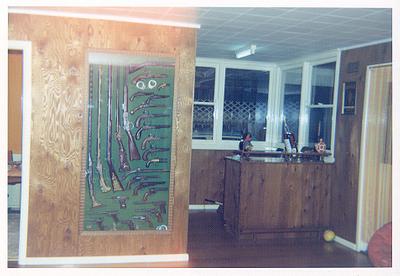Share your craft projects
Make new craft buddies
Ask craft questions
Blog your craft journey
Exploring the Timeless Beauty and Versatility of Walnut in Woodworking
In the realm of woodworking, where craftsmanship meets creativity, few materials possess the allure and versatility of walnut. Renowned for its rich color, fine grain, and workability, walnut has been cherished by artisans for centuries, gracing everything from elegant furniture to intricate carvings. Let's delve into the world of walnut and uncover why it remains a cherished choice for woodworkers worldwide.
A Natural Elegance: The Beauty of Walnut
One of the most captivating aspects of walnut is its stunning aesthetic appeal. With its deep, chocolate-brown hues tinged with subtle undertones of purple, gray, and even green, walnut possesses a warmth and richness that few woods can match. Whether used in its natural state or enhanced with a polished finish, walnut exudes an understated elegance that effortlessly elevates any woodworking project.
Versatility in Design
From traditional to contemporary styles, walnut adapts seamlessly to a myriad of design aesthetics. Its fine, straight grain allows for clean, precise cuts, making it ideal for crafting sleek, modern pieces. At the same time, walnut's innate warmth and character make it equally suited for rustic or vintage-inspired creations. Whether fashioned into sleek, minimalist furniture or intricately carved ornaments, walnut lends itself to a diverse range of woodworking applications.
Workability and Durability
Beyond its visual appeal, walnut is prized for its exceptional workability. Unlike some hardwoods that can be challenging to manipulate, walnut is relatively easy to carve, shape, and sand, making it a favorite among woodworkers of all skill levels. Its stability and resistance to warping also ensure that walnut pieces stand the test of time, maintaining their beauty and integrity for generations to come.
Sustainable and Environmentally Friendly
In an era increasingly concerned with sustainability, walnut stands out as a responsible choice for woodworking projects. As a domestically grown hardwood in many regions, it reduces the environmental impact associated with transportation. Additionally, walnut trees are typically harvested from managed forests, where responsible forestry practices ensure the replenishment of natural resources for future generations.
Practical Applications
The versatility and durability of walnut make it suitable for a wide range of woodworking applications. From exquisite furniture pieces such as tables, chairs, and cabinets to smaller items like cutting boards, bowls, and jewelry boxes, walnut lends an air of sophistication and craftsmanship to any project. Its natural resistance to decay also makes it a popular choice for flooring and architectural elements, adding warmth and character to homes and commercial spaces alike.
Conclusion
In the world of woodworking, few materials can rival the timeless appeal and versatility of walnut. With its captivating beauty, ease of workability, and sustainability, walnut continues to inspire artisans and craftsmen around the globe. Whether adorning a grand dining table or a delicate keepsake box, walnut remains a cherished choice for those who seek to create enduring pieces of artistry from nature's most exquisite offerings.




















